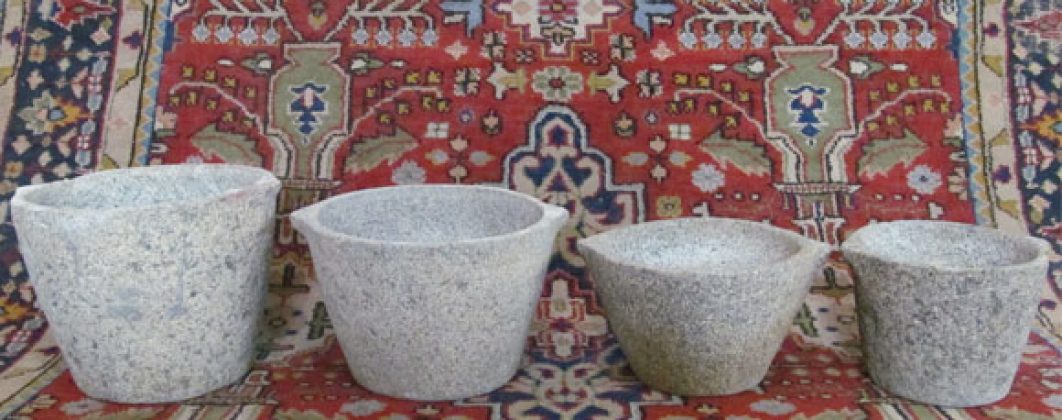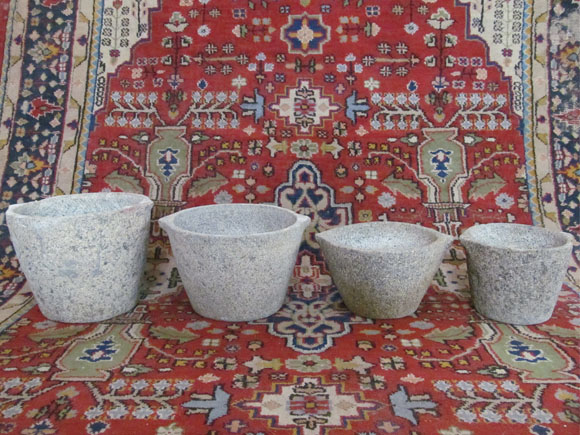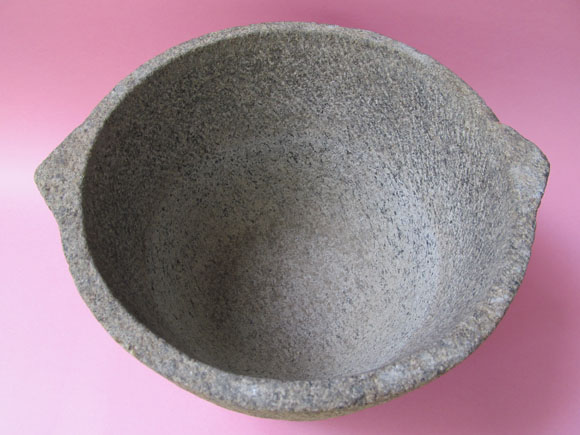
Human civilization has passed through different eras and epochs resulting in the inventions that shaped our history and culture. Amongst the many ages that we have evolved through Stone Age is definitely one of them. Stone Age was the time when our entire race depended on stones. They used tools and weapons made out of stone. Everything from household items to kitchen utensils were made out of stones. Stone was the most abundantly found natural resource at that point in time. People use to break big boulders, give it a shape and make it look like an object or carve small stones to turn it into something handy.

After inventing fire, the next breakthrough that our race experienced was stone utensils. When people realized that food tasted good when it was cooked they also felt the need to make utensils that could hold, cook and serve their food. This process gave birth to stone pots which were extensively used by every nomadic group. However with advancement in technology and state of the art inventions these stone pots are being over shadowed and they are on the verge of extinction. These pots now have become artifacts that can be traced mostly in museums or in an antique collector’s house.

I wasn’t surprised when I went to YK sir’s (his full name is Y. Krishna Murthy) and he is popularly known as YK) house and saw some wonderfully crafted stone cookware and storage pots amongst all the other items that he has collected over the years. He has aesthetically placed stone cookware in his house making sure each of them embraces history and culture. These pots also scream out simplicity and effervescence. The most intriguing thing about this stone cookware is- it is still in use in some districts of Tamil Nadu, Karnataka and Andhra Pradesh. I was under the impression that the only stone appliance that people use today are those grinding stones which have been made popular by celebrity chefs, thanks to them, they have managed to keep some bit of culture alive. YK sir told that these cooking and storage pots are called Kalchetti (kal-stone, chatti- pot) in Tamil and Ratichippa(rati-stone, chippa- pot) in Telugu. He further explained that some of the traditional families in Tamil Nadu,Kerala and Andhra Pradesh still cook their traditional food items in stone pots. Tamarind juice and cooking in stone pot is a winning combination as you don’t have to worry about the acid in tamarind reacting with stone. Additionally it also helps in retaining the original taste of all the spices used in your cooking.

I personally feel cooking and storing food in stone pots is a healthy choice as it is chemical free. Stone pots take time to get heated and once heated the heat is distributed evenly which makes your food tastier. When food is cooked in the stone pots, the natural minerals that are inherent in the stone are passed on to the food by making the food nutritious and healthy. They take time to cool hence keeps the cooked food warm and tasty for a longer period of time. People who have realized the importance of cooking in stone pots now have an option to buy stone cookware. To know more about stone cooking pots, you will find an article on “Antiques Stone Cooking Pots” in this website. Here is the link.https://ykantiques.com/2012/05/antique-stone-cooking-pots.html
YK sir went on to explain that since time immemorial these pots have been used to store items like tamarind, dry chilies, dry spices, chilli powder, salt, turmeric powder and pickles. Other benefits about these containers are it is environment friendly, doesn’t create any hazard when disposed out in the open. There is no fear of eroding of the layers or corrosion which is quite common in present day non-stick cookware that are Teflon coated or anodized. Apart from cooking vessels the stone storage vessels were extensively used to store food items. It is a known fact that there were no plastic and stainless steel containers hundred years before and those days most of the items are stored in earthen pots, stone pots ,brass and copper containers. Certain items like pickles, salt and tamarind cannot be stored in brass or copper vessels and the choice left was clay pots or stone pots.
Talking about how these pots were made he said those pots were made with two different categories of stones. These pots were always differentiated into cooking pots and storage pots. Cooking pots were made of soft stone which was lighter and small in size making these pots mobile, meaning it could be moved and carried around easily. On the other hand the storage pots were made of granite stone, making them comparatively large and heavy. The stone pots are handmade. The stone is chiseled into a shape of a pot and then storage space is carved out forming a vacant space inside the pot. It is a very skilled job.The artisans who have created these beautiful stone pots have now left their profession since there are no more buyers for their products. Slowly we lost this fine art of carving storage pots out of a single piece of stone with a bare minimum tools like a hammer and a chisel.

By nature, stone and clay storage pots do not allow bacteria, fungus and worms to form and survive in the items stored in them. Items like ghee, tamarind, pickles, pulses and other household edible items can be stored even for an year without getting spoiled. Normally these stone containers do not have lids on the top to cover the pot. Stone covers may not seal the top and there is a chance of moist air entering the empty space in the pot. Most of the items get spoiled because of the air which may contain air born bacteria. To prevent moist air entering the stone pot, the opening of the pot is tied with dry clean cotton cloth and tied around with a string. The cloth will absorb any moister contained in the air and also filter any bacteria entering into the pot. As an extra precaution the cotton cloth is dipped into water mixed with turmeric powder and dried in the sun before covering the pot opening.
Turmeric is antioxidant meaning that it has a substance that inhibits oxidation and counteract the deterioration of stored food products. Turmeric is also antiviral, antibacterial, anti-fungal, properties. Turmeric is a great pesticide. If water containing turmeric powder is sprinkled near and around the stone pots, it wards of insects, ants, and termites.
YK sir also tells me that the huge stone storage pots called golem are used for storage of water and as cattle feed vessels in the olden days. These stone pots are placed near the wells to store water drawn from the well. This serves the purpose of a mini water tank from which the daily usage of water is drawn out.

His maternal grandfather was a land lord and he was cultivating his own lands. The golem is kept in the entrance to his massive house and those that enter the house would wash their feet and hands from the water stored in the golem using a brass chombu or lota. This is a hygienic practice followed by most of the households in the olden days. His grandfather had a good number of cattle like cows, calves and oxen and they are sheltered in a cattle shed located within the compound wall of the house. Similar large stone pots are also kept in the cattle shed so that cattle can drink water from these golems. The advantage of keeping these strong and heavy stone pots in the cattle shed is that cattle cannot push or break these pots and provide a lifelong service.
Before the invention of present day ready-mix cattle feed, in the olden days cattle feed consisted of green grass and hey and these are kept as small heaps in front of the cattle. They used to eat the two types of grass as and when they fell like having. Apart from this, the cattle are also fed with a liquid food called Kudithi containing ingredients like rice bran, rice husk, boiled cereal and pulses of two or three varieties like horse gram, all mixed in water. This Kudithi used to be prepared in the stone pots and served to the cattle.
Stone is an integral part of our lives since time immemorial and even now. I am sure you must have had some experience with stone cooking or storage pots used in your mother’s house or grandmother’s house. We love it, if you can share such experiences.

Copyright © 2021 YK Antiques Home Museum
One Response
Very informative, Sir. Cooking in stone vessels solved my problem of using tamarind, since it cannot be used in brass/bronze without kalai. Thank you. It will be of great help if there is information on steamers, brass/bronze/copper. Usually used in Karnataka/Coorg/mangalore region. Thanks